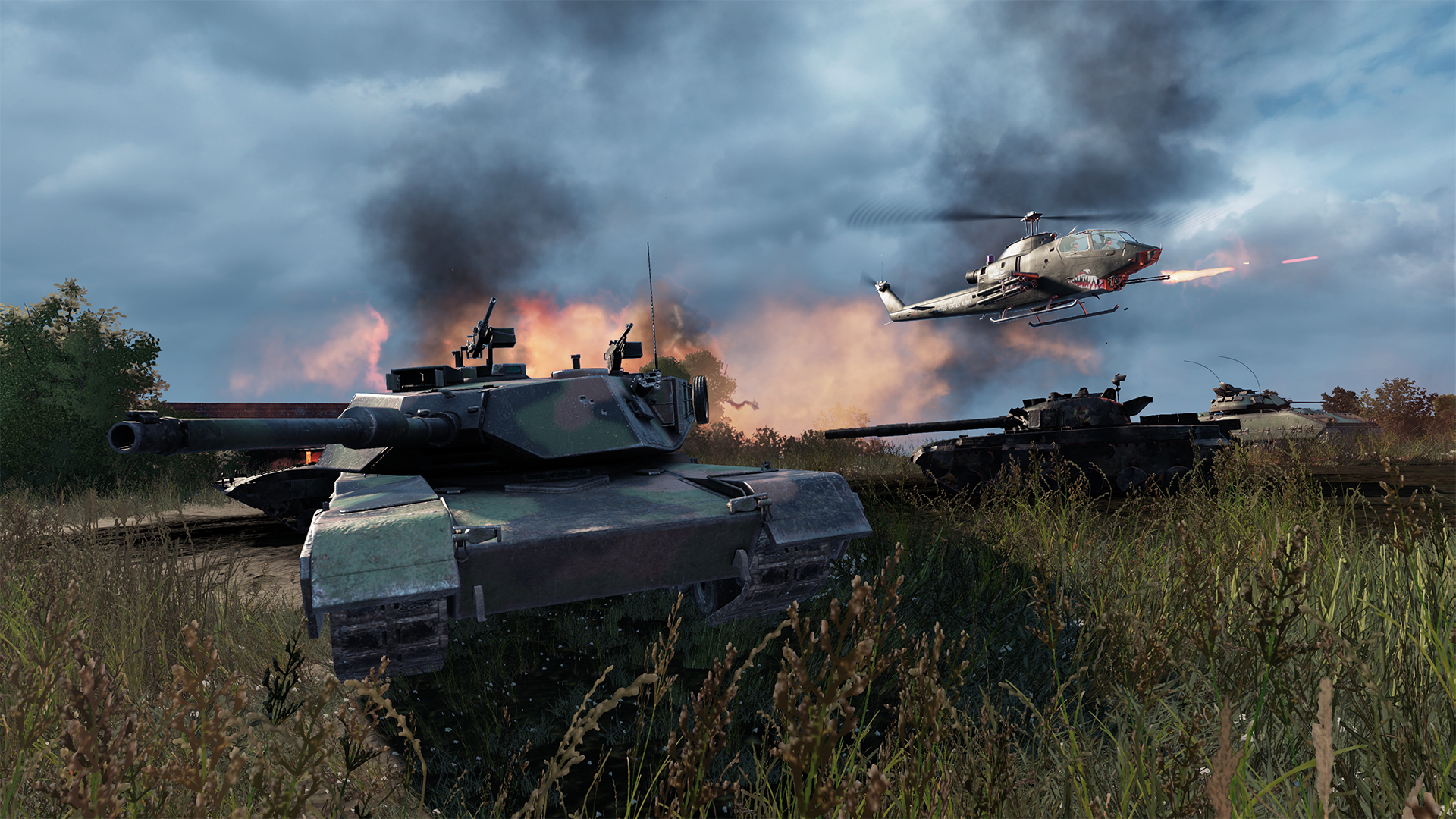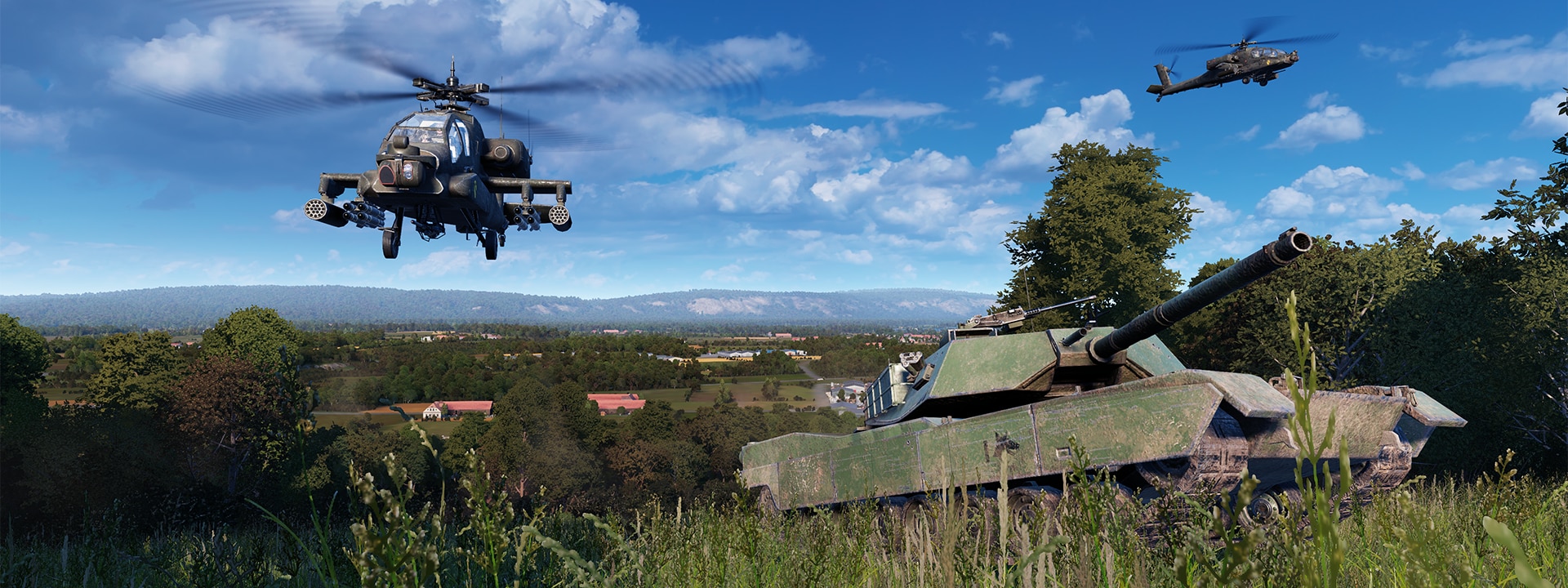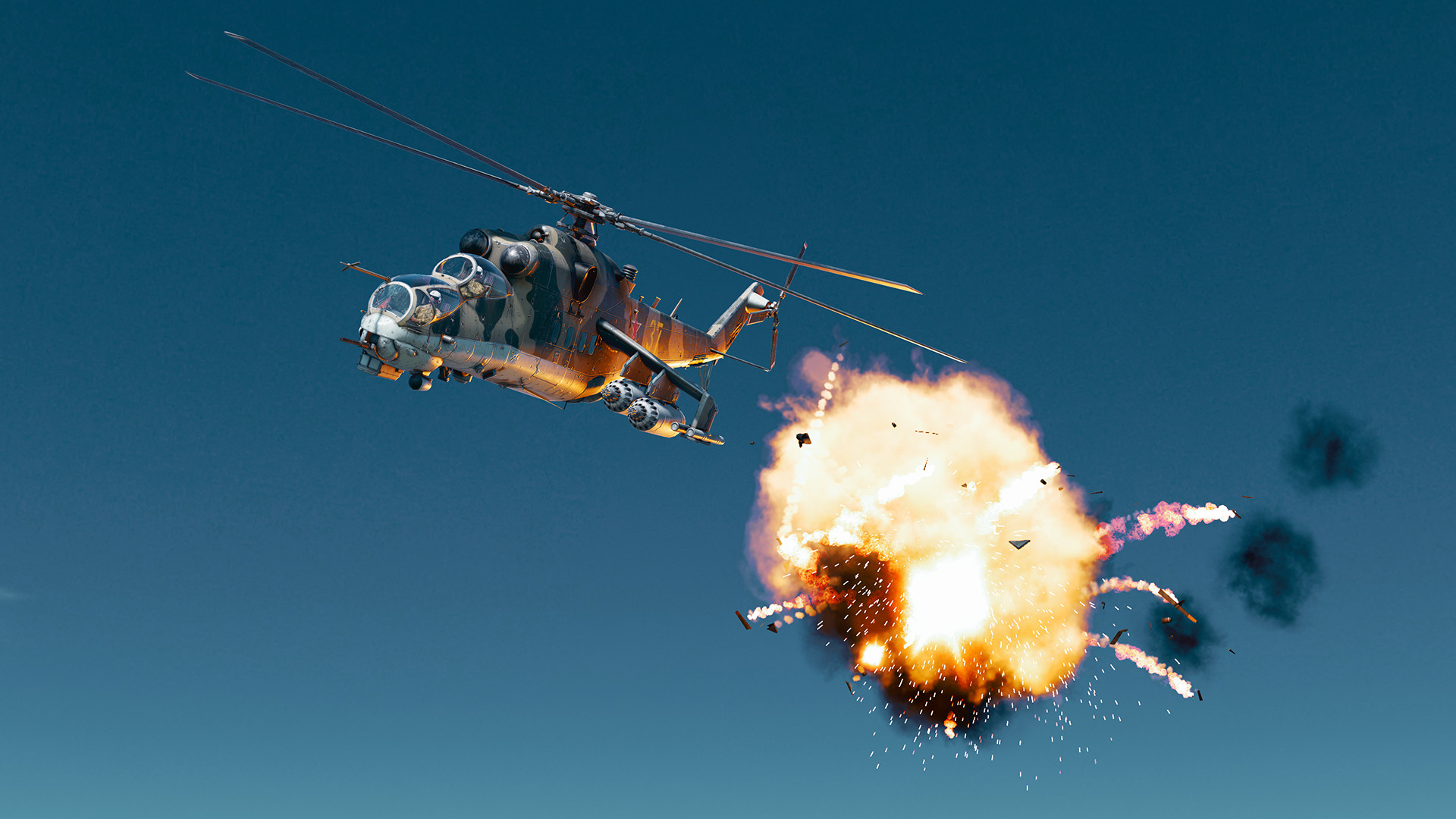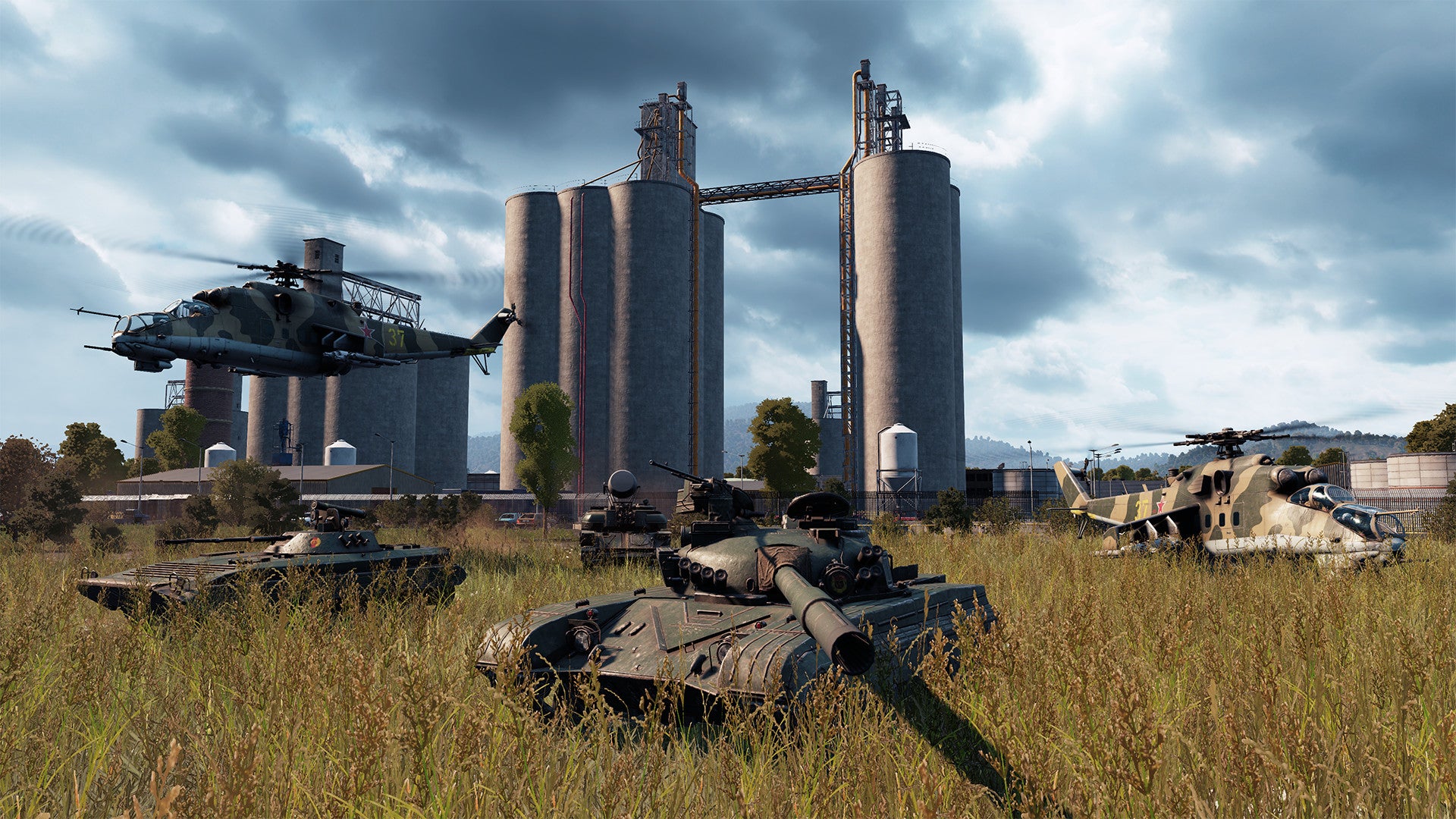Deutschland '89
Happy New Year, commanders !
In today’s DevBlog, we will look at WARNO’s scope, theater of operation and historical context. With the introduction of Army General campaigns and divisional battlegroup system to WARNO, we are sticking more closely to reality … although still being an alternate timeline. History didn’t pan out the way we know …
[h2]Countdown to the Apocalypse[/h2]
The date is 1989, and for the past two years the Cold War has grown much hotter than we ever got to know.
As soon as Mikhail Gorbachev became the new General Secretary of the Communist Party of the Soviet Union in 1985, his attempts at reforming the ailing USSR brought him on a collision course with the most orthodox, Stalinist wing of the party. The introduction of Demokratizatsiya (democratization) and Glasnost (political transparency) in the Soviet society alienated him from the party’s Old Guard. These hardline politicians started plotting against him.
Gorbachev and his reformist allies were removed from power in a bloodless military coup in April 1987. The position of General Secretary of the Communist Party of the Soviet Union was replaced by a Troika (a group of three men) representing the Party, the KGB and the Army.

Soon, the Soviet Union was brought back to heel, and any trace of political overture quickly forgotten. Unrest in the Batlic States and Armenia was crushed without remorse. Even neutral Finland, though not a Soviet state but with a press and political establishment press having grown openly critic of the Soviet Union under Gorbatchev’s short rule, was brought back in line. In a covert move reminiscent of Czechoslovakian President Dubček’s forced resignation after the Prague Spring of 1968, the then-neutral Finnish government is forced to include a majority of pro-Soviet members, thrusting the country into Moscow’s sphere of influence - under a very clear threat of arms.
The so-called Helsinki’ Coup” of 1987 was the trigger of a further worsening and renewed tension between the West and East. An outraged U.S. President Ronald Reagan’s annulled the Intermediate-Range Nuclear Forces agreement, about to be signed, widening the gap between the two major powers. Following the advice of his most hawkish advisors, Reagan initiates a second phase of the so-called New Cold War he devised in the early 80s. An even more aggressive posturing in Western Europe is instigated, which includes the funding of counterinsurgencies, and defense armament deals with old and new allies alike.

Western economic sanctions and rising military expenditures force the Soviet Union into ever worse trade deals, inflating its already crippling debts. Oil reserves are dangerously low and food shortages throughout the zone of influence, including Eastern Europe and Baltics barely averted.
Meanwhile, the Troika and its Warsaw Pact’s most hardline allies strengthen their hold on their respective countries, squashing the rising wave of dissident and peaceful civil groups. East Germany , Hungary, Czechoslovakia and Romania become even more repressive. In Poland, Wojciech Jaruzelski tightens his grip on his country with an even harsher Martial Law.
In 1989, both U.K. Prime Minister Margaret Thatcher and the new U.S. President George H. W. Bush, having succeeded Reagan, greatly admonish the Soviet Union’s violent crackdown on its citizens, and promise a greatly renewed effort in “the fight for freedom and democracy.” New armament deals, support for democratic groups behind the Iron Curtain, mobilization plans, and technological advancements are revealed. The pace of war accelerates rapidly. Overtly, NATO takes an a cautious approach, but in secret rearms and prepares for a potential conflict in Western Germany.

When a larger than ever version of the REFORGER exercise was announced for September 1989 at the beginning of the year, the Troika paranoidly believed it to be an elaborate smokescreen for a land conflict in Western Europe. The Warsaw Pact is deemed to be only minutes away from a full-on NATO invasion. The Soviet Union sees no other recourse but war.
Under cover of its own massive exercise in East Germany announced for the end of June, Zapad-89, the Warsaw Pact mobilizes its forces. The whole month of May and into June sees massive troop movements, chiefly on the eastern side of the Inner German Border. Even after the official conclusion, the armies remain active. Suddenly, on June 20th sees the withdrawal of most East German Grenztruppen (border guards). War is coming home.
 June 21, 1989, 07:05 - the offensive begins.
June 21, 1989, 07:05 - the offensive begins.
[h2]Willkommen in Deutschland[/h2]
Now that you know more about WARNO’s alternate context, let’s have a look at its setting…
We will focus on the Central Germany’s theater of operations, and more specifically the infamous Fulda Gap.

The Fulda Gap was a natural corridor between the Vogelsberg (North) and Rhön and Spessart (South) mountain ranges, running along the Kinzing River valley. It was the obvious point of passage of any army moving from East and West or the other way around: Napoléon used it as a route of retreat after his defeat at Leipzig in 1813, and the Americans drove through it the other way in the last month of World War II to meet the Soviets “as far east as possible”.
For the same reasons, during the Cold War, the Fulda Gap was regarded as one of the two possible focal points of Soviet invasion in West Germany. The other one being the North German Plains, in the area of responsibility of the the British Army of the Rhine.
As such, the Fulda Gap and this sector of the Iron Curtain, was one of the most guarded and militarized in the world during the Cold War.

NATO’s forward defense was CENTAG, an army-size formation with a mission to hold the Fulda Gap long enough for further NATO reinforcements to be mobilized to counter-attack. It controlled four army corps, both American and West German, with possible additional reinforcements coming from the rear and other NATO members.
On the other side of the Iron Curtain stood elements of the mighty Soviet Western Group of Forces (WGF). More specifically the 8th Guards Army acting as the spearhead of any Warsaw Pact invasion, with the 1st Guards Tank Army earmarked for close support. The East German 3. Armee was also present, although historically wouldn’t have been used as a separate command, but rather his assets used as support force for Soviet armies depending on the situation.
This setting will be the background for WARNO’s featured Army General campaigns and Scripted Scenarios pitting NATO’s CENTAG against the Warsaw Pact’s Western Group of Forces.
While Army General campaigns and Scenarios will focus on historical divisions and formations from both CENTAG and WGF, the multiplayer battlegroups and units will be drawn from a wider area, including REFORGER units, some French and British troops being featured under the NATO banner and additional Western Group of Forces assets for the Warsaw Pact.
[h2]To be or not to be?[/h2]
So, what will you get when WARNO is finally released?

That’s quite a lot, but we know you … what about Poland and Czechoslovakia are you wondering? And why only CENTAG, what about NORTHAG and SOUTHAG?
They aren’t forgotten. Don’t worry, we won’t skip them. But we can’t do everything at once.
NORTHAG and SOUTHAG will be featured at a later date as Army General campaigns DLC, with their own massive and exhaustive OOBs, AG campaign maps and scenarios, specific units and nations, …
[h2]That’s all for today[/h2]
Let us know what you think! In case you haven’t, don’t forget to wishlist WARNO on Steam.
https://store.steampowered.com/app/1611600/WARNO/
Keep a track of WARNO and join the community. You can check the latest news on the Steam News page or visit the Steam Forums. Join the excellent Discord server, the new Reddit page and Instagram.
See you next week ..

In today’s DevBlog, we will look at WARNO’s scope, theater of operation and historical context. With the introduction of Army General campaigns and divisional battlegroup system to WARNO, we are sticking more closely to reality … although still being an alternate timeline. History didn’t pan out the way we know …
[h2]Countdown to the Apocalypse[/h2]
The date is 1989, and for the past two years the Cold War has grown much hotter than we ever got to know.
As soon as Mikhail Gorbachev became the new General Secretary of the Communist Party of the Soviet Union in 1985, his attempts at reforming the ailing USSR brought him on a collision course with the most orthodox, Stalinist wing of the party. The introduction of Demokratizatsiya (democratization) and Glasnost (political transparency) in the Soviet society alienated him from the party’s Old Guard. These hardline politicians started plotting against him.
Gorbachev and his reformist allies were removed from power in a bloodless military coup in April 1987. The position of General Secretary of the Communist Party of the Soviet Union was replaced by a Troika (a group of three men) representing the Party, the KGB and the Army.

Soon, the Soviet Union was brought back to heel, and any trace of political overture quickly forgotten. Unrest in the Batlic States and Armenia was crushed without remorse. Even neutral Finland, though not a Soviet state but with a press and political establishment press having grown openly critic of the Soviet Union under Gorbatchev’s short rule, was brought back in line. In a covert move reminiscent of Czechoslovakian President Dubček’s forced resignation after the Prague Spring of 1968, the then-neutral Finnish government is forced to include a majority of pro-Soviet members, thrusting the country into Moscow’s sphere of influence - under a very clear threat of arms.
The so-called Helsinki’ Coup” of 1987 was the trigger of a further worsening and renewed tension between the West and East. An outraged U.S. President Ronald Reagan’s annulled the Intermediate-Range Nuclear Forces agreement, about to be signed, widening the gap between the two major powers. Following the advice of his most hawkish advisors, Reagan initiates a second phase of the so-called New Cold War he devised in the early 80s. An even more aggressive posturing in Western Europe is instigated, which includes the funding of counterinsurgencies, and defense armament deals with old and new allies alike.

Western economic sanctions and rising military expenditures force the Soviet Union into ever worse trade deals, inflating its already crippling debts. Oil reserves are dangerously low and food shortages throughout the zone of influence, including Eastern Europe and Baltics barely averted.
Meanwhile, the Troika and its Warsaw Pact’s most hardline allies strengthen their hold on their respective countries, squashing the rising wave of dissident and peaceful civil groups. East Germany , Hungary, Czechoslovakia and Romania become even more repressive. In Poland, Wojciech Jaruzelski tightens his grip on his country with an even harsher Martial Law.
In 1989, both U.K. Prime Minister Margaret Thatcher and the new U.S. President George H. W. Bush, having succeeded Reagan, greatly admonish the Soviet Union’s violent crackdown on its citizens, and promise a greatly renewed effort in “the fight for freedom and democracy.” New armament deals, support for democratic groups behind the Iron Curtain, mobilization plans, and technological advancements are revealed. The pace of war accelerates rapidly. Overtly, NATO takes an a cautious approach, but in secret rearms and prepares for a potential conflict in Western Germany.

When a larger than ever version of the REFORGER exercise was announced for September 1989 at the beginning of the year, the Troika paranoidly believed it to be an elaborate smokescreen for a land conflict in Western Europe. The Warsaw Pact is deemed to be only minutes away from a full-on NATO invasion. The Soviet Union sees no other recourse but war.
Under cover of its own massive exercise in East Germany announced for the end of June, Zapad-89, the Warsaw Pact mobilizes its forces. The whole month of May and into June sees massive troop movements, chiefly on the eastern side of the Inner German Border. Even after the official conclusion, the armies remain active. Suddenly, on June 20th sees the withdrawal of most East German Grenztruppen (border guards). War is coming home.
 June 21, 1989, 07:05 - the offensive begins.
June 21, 1989, 07:05 - the offensive begins.[h2]Willkommen in Deutschland[/h2]
Now that you know more about WARNO’s alternate context, let’s have a look at its setting…
We will focus on the Central Germany’s theater of operations, and more specifically the infamous Fulda Gap.

The Fulda Gap was a natural corridor between the Vogelsberg (North) and Rhön and Spessart (South) mountain ranges, running along the Kinzing River valley. It was the obvious point of passage of any army moving from East and West or the other way around: Napoléon used it as a route of retreat after his defeat at Leipzig in 1813, and the Americans drove through it the other way in the last month of World War II to meet the Soviets “as far east as possible”.
For the same reasons, during the Cold War, the Fulda Gap was regarded as one of the two possible focal points of Soviet invasion in West Germany. The other one being the North German Plains, in the area of responsibility of the the British Army of the Rhine.
As such, the Fulda Gap and this sector of the Iron Curtain, was one of the most guarded and militarized in the world during the Cold War.

NATO’s forward defense was CENTAG, an army-size formation with a mission to hold the Fulda Gap long enough for further NATO reinforcements to be mobilized to counter-attack. It controlled four army corps, both American and West German, with possible additional reinforcements coming from the rear and other NATO members.
On the other side of the Iron Curtain stood elements of the mighty Soviet Western Group of Forces (WGF). More specifically the 8th Guards Army acting as the spearhead of any Warsaw Pact invasion, with the 1st Guards Tank Army earmarked for close support. The East German 3. Armee was also present, although historically wouldn’t have been used as a separate command, but rather his assets used as support force for Soviet armies depending on the situation.
This setting will be the background for WARNO’s featured Army General campaigns and Scripted Scenarios pitting NATO’s CENTAG against the Warsaw Pact’s Western Group of Forces.
While Army General campaigns and Scenarios will focus on historical divisions and formations from both CENTAG and WGF, the multiplayer battlegroups and units will be drawn from a wider area, including REFORGER units, some French and British troops being featured under the NATO banner and additional Western Group of Forces assets for the Warsaw Pact.
[h2]To be or not to be?[/h2]
So, what will you get when WARNO is finally released?
- First, four Army General campaigns set in CENTAG’s theater of operation, featuring all the US, Soviet, East and West German divisions (and yes, independent units too, such as, let’s say … cavalry regiments😉) and units historically stationed in this area. That’s a MASSIVE order or battle, down not just to company level (as currently in Steel Division 2) but now to platoon level! And of course, all of them playable from both sides, in solo, coop or versus.
- Several (final number still under review) Scripted Scenarios. These are not strategic campaigns, rather tactical scenarios. Unlike Skirmish, these missions will have a specific briefing with special setting, deployment or victory rules to present a different challenge, and so on. Also playable from both sides in solo, coop or versus.
- Although Army General campaigns will focus on CENTAG and Western Group Forces (that is US and West German vs. Soviet and East German forces), 6 nations will be in total playable in multiplayer: USA, West Germany, USSR and East Germany of course, but also including France and the UK. In this way, we have most of the Cold War’s major weapon manufacturers and nations covered.
- 16 historical battlegroups, each corresponding to a real-life division or brigade with all its combat equipment, vehicles, units, variants, camouflage patterns, weapons, voice acting, … Both NATO and Warsaw Pact nations were organized and trained to operate together on the battlefield; you can expect allied units to be included in certain battlegroups, be it in air support or the full firepower of a “foreign” brigade. We will return to that matter in detail in a later DevBlog …
- Over 600 units, with major improvements in modeling and weapons/FX/combat sounds over our previous games.

That’s quite a lot, but we know you … what about Poland and Czechoslovakia are you wondering? And why only CENTAG, what about NORTHAG and SOUTHAG?
They aren’t forgotten. Don’t worry, we won’t skip them. But we can’t do everything at once.
NORTHAG and SOUTHAG will be featured at a later date as Army General campaigns DLC, with their own massive and exhaustive OOBs, AG campaign maps and scenarios, specific units and nations, …
- NORTHAG, under British command, will cover the combats in the North German Plains and focus specifically on the British & Poles (and some others 😉).
- Although SOUTHAG didn’t exist anymore since France’s withdrawal from NATO’s integrated military command in 1966, exercises had been held in the late 80’s to anticipate its quick recreation in case of war in Germany. With the First French Army at its core, it would have taken over command of the Southern part of CENTAG with some German & US troops under its control. It will focus specifically on the French & Czechoslovaks (and again, some others).
[h2]That’s all for today[/h2]
Let us know what you think! In case you haven’t, don’t forget to wishlist WARNO on Steam.
https://store.steampowered.com/app/1611600/WARNO/
Keep a track of WARNO and join the community. You can check the latest news on the Steam News page or visit the Steam Forums. Join the excellent Discord server, the new Reddit page and Instagram.
See you next week ..




















